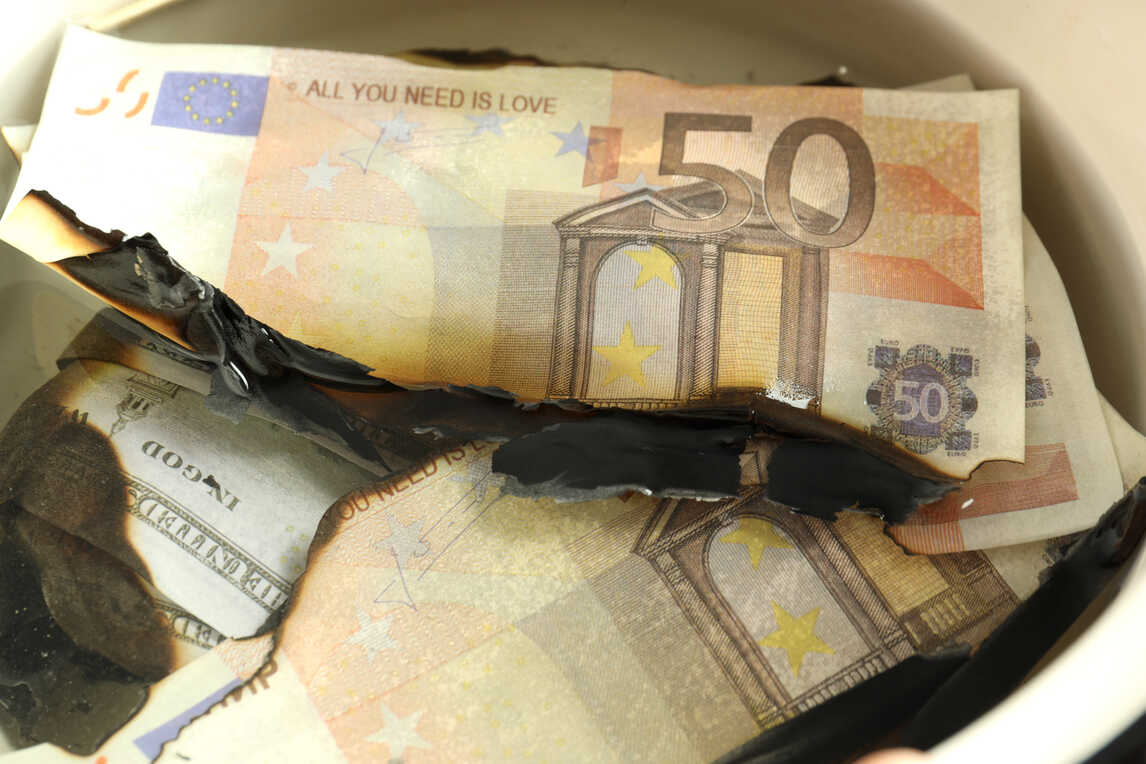Simplifying Life Insurance in India
Stagflation Vs Inflation

Inflation is a general upsurge in the prices of things and may even stimulate the economy. However, stagflation is an economic phase that manifests slow growth of the economy, massive inflation, and increased unemployment. Stagflation is bad for any economy at all times.
Keep reading to know more about stagflation vs inflation
What is Stagflation?
What is Inflation?
Inflation refers to a measure that rates the rise in prices of goods as well as services in any economy. This can also be interpreted as decline in purchasing power of money over a period of time.
When inflation takes place, it leads to higher increasing costs for basic need-based items like food, medical care and want-based items like automobiles or jewellery. The consumer price index, or CPI, is a term commonly used to measure inflation, which demonstrates the rate of price changes for a phase based on a basket of goods and services.
What Are the Differences Between Stagflation and Inflation?
Following are the differences between stagflation and inflation:
|
Aspects |
Inflation |
Stagflation |
|
Potential Causes |
Inflation is an outcome due to a rise in combined demand, production costs, and supply decline. |
Among the common causes, one is supply shockwaves in commodities, such as petroleum, which is likely to shake up the whole economy. |
|
Frequency |
Inflation is common and can be a sign of a healthy economy. |
Stagflation is a rare occurrence. The last stagflation was experienced in the 1970s. |
|
Duration |
Inflation is basically measured on a yearly basis, so the inflation rate is more likely to vary. This is because the same inflation rate cannot last for very long. |
Stagflation is mostly long-term. For example, the stagflation experienced in the US in the 1970s continued until the beginning of 1980s. |
|
Effect on GDP |
Inflation can lead to a short-term rise in GDP since most consumers spend more as they become worried, considering the price will continue to rise in the upcoming days. |
Often GDP growth remains negative or low during the phase of stagflation. |
|
Employment |
As explained by the Phillips curve, generally, inflation and unemployment manifest an inverse relation. |
A high rate of unemployment, with high inflation, is common during stagflation. |
|
Recovery |
The phase of high inflation can end if the supply of money and demand of consumers get reduced via fiscal policies such as improved interest rates, increased taxes, etc. |
Making investments for economic growth may multiply inflation while increasing interest rates to lessen inflation and commonly lead to slower growth of the economy. |
What Causes Inflation?
In general, inflation can be caused due to upsurge in production costs, termed cost-push inflation, a rise in demand for different products or services, termed demand-push inflation and due to natural expectations of people or built-in inflation.
- Cost-Push Inflation: Cost-push inflation occurs when costs rise due to the increase in production costs, like expensive raw materials, higher wages, etc. The demand remains unchanged, and the supply of such goods drops, owing to increased production costs. Consequently, the additional costs of production burden consumers by making them pay higher amounts for finished goods.
- Demand-Pull inflation: Demand-pull inflation occurs when the demand for any product or service increases. Especially when the surge in demand influences the range of goods available, their prices are most likely to rise. Although a short-term imbalance in supply and demand may not have much impact, continued heavy demand tends to impact the economy while increasing costs for other items. This too, results in demand-pull inflation.
- Built-In Inflation: Built-in inflation takes place when a large number of people believe inflation will last in the future. Due to this shared guesswork, workers started demanding higher wages to meet their standard of living. The rise in wages increases the cost of goods, thereby causing inflation.
What Causes Stagflation?
At first, it was thought that stagflation was not possible. It is because the inflation rate and unemployment generally travel in opposite directions. However, the Great Inflation that took place during the 1970s eventually established that stagflation is a reality and can have a shattering impact on the economy.
- Price Shocks: One theory confirms that stagflation occurred due to the sudden petroleum crisis in the 1970s. In 1973, the Organisation of Petroleum Exporting Countries (OPEC) declared a restriction on supplying petrol to Western countries. This was impacted heavily by the rising of oil prices worldwide while increasing the cost of transportation and goods, which equally contributed to huge unemployment.
- Poor Economic Policies: Another example showing the occurrence of stagnation, inflation, and unemployment is due to adopting a poor fiscal and economic policy. Intense regulation of markets, labour and goods in a non-inflationary economic environment may result in stagflation.
So now you have a crystal-clear idea about stagflation vs inflation and their causes. Precisely, inflation is a normal economic phenomenon, and it can even be healthy for an economy’s growth. On the other hand, the occurrence of stagflation is very uncommon, and it can severely harm the economy.
FAQs About Stagflation vs Inflation
Is it beneficial to invest during a stagflation?
What are the common characteristics of stagflation?
Certain typical features of stagflation are:
- High rate of inflation
- Sluggish economic growth or stagnation
- High rate of unemployment
- Poor economic phase
What are the investment options for stagflation?
Which Indian state records highest inflation?
Does stagflation affect the payout of a term insurance policy?
During tough times like stagflation, should I pause or cancel my life insurance to save money?
Other Important Articles Related to Inflation and Financial Planning
Important Articles About Financial Planing
Latest News
Read More




















